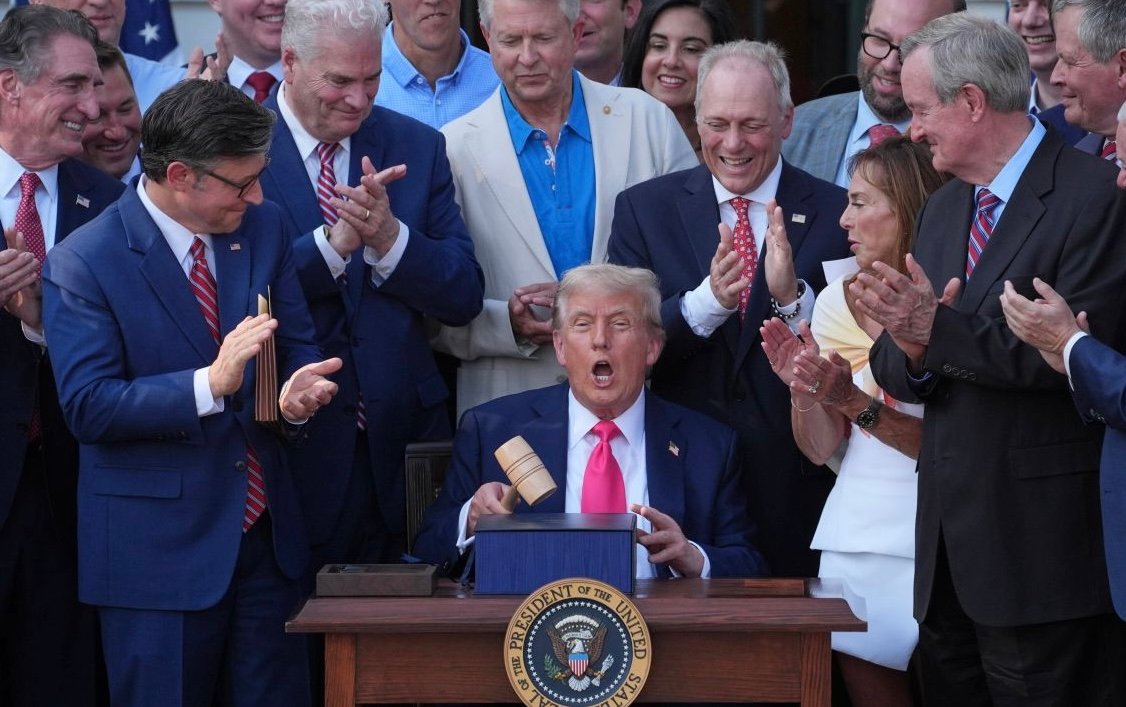A Major Legislative Victory for Trump In a landmark decision, Congress passed a sweeping tax and spending bill that fulfills one of President Donald Trump’s central campaign promises: eliminating federal taxes on a portion of workers’ tips. The legislation, known as the One Big Beautiful Bill Act, was approved this week by both the Republican-controlled …
Trump’s “No Tax on Tips” Promise Becomes Law: What It Means for American Workers


By Emily Zhang,
Senior Reporter, The Midtown Times | Article adapted from NPR report
A Major Legislative Victory for Trump
In a landmark decision, Congress passed a sweeping tax and spending bill that fulfills one of President Donald Trump’s central campaign promises: eliminating federal taxes on a portion of workers’ tips. The legislation, known as the One Big Beautiful Bill Act, was approved this week by both the Republican-controlled House and Senate, and includes a provision that allows tipped workers to deduct up to $25,000 annually from their taxable income. Any tips earned beyond that threshold will remain subject to federal taxes.
According to Garrett Watson of the Tax Foundation, a nonpartisan group advocating for tax code simplification, this cap would still cover most tipped workers nationwide. “The majority of tipped income falls below that level so that the deduction will be generous for most,” Watson told NPR.
High Earners Excluded and IRS Will Set Boundaries
The tax exemption excludes workers earning over $150,000 annually to prevent potential abuse by high-income professionals who might attempt to misclassify their earnings as tips.
Tax experts had raised concerns during the campaign that wealthy individuals — such as hedge fund managers or lawyers — could exploit the policy by reclassifying income as tips to dodge taxes.
To further limit misuse, the bill restricts the exemption to occupations that “customarily and regularly receive tips,” though the law itself does not specify which jobs qualify. That responsibility will fall to the IRS and the Treasury Department to define through regulations, Watson noted.
If left unrenewed, the measure is scheduled to expire in 2028, aligning with the end of Trump’s second term, should he remain in office.
From Las Vegas to Legislation: A Campaign Promise Delivered
Trump’s push for this policy began on the campaign trail in 2024, after speaking with a hospitality worker in Las Vegas. It soon became a centerpiece of his re-election campaign, garnering support from Democratic contenders like Kamala Harris, who also proposed a version of tax relief for tipped workers.
With the bill now awaiting Trump’s signature, eligible workers could see changes in their federal withholdings as early as late 2025, depending on how quickly the Treasury and IRS implement new guidelines.
“Going into next year’s tax season, workers may see adjustments or even refunds on withheld tip income,” Watson told NPR.
A Bipartisan Spark in a Divided Bill
While the broader bill faced sharp partisan divides — especially over significant cuts to Medicaid — the tip tax exemption drew bipartisan backing. Among its supporters were Senators Ted Cruz (R-TX) and Jacky Rosen (D-NV), as well as Representatives Vern Buchanan (R-FL) and Steven Horsford (D-NV).
Horsford, however, criticized the bill’s broader impact, calling it a “reverse Robin Hood” that slashes healthcare for the poor while offering tax breaks to the wealthy. His attempt to make the tip exemption permanent failed to pass.
Buchanan praised the passage of the bill, calling it “promises made, promises kept” in a statement to NPR.
Who Really Benefits?
While the provision made headlines, Martha Gimbel, Executive Director at the Yale Budget Lab and a former Biden administration official, said the overall impact on the labor market will be modest.
“Tipped employment represents just about 2.5% of the labor force,” she told NPR, emphasizing that many low-income workers won’t benefit because their taxable income is already minimal.
“The real beneficiaries,” Gimbel explained, “are middle and upper-middle-class tipped workers — those with enough income to benefit from a $25,000 deduction.”
She also warned of indirect consequences, such as businesses adjusting pricing structures. “A hairdresser, for example, might lower the cost of a haircut but expect tips to increase — we’ll have to see how that plays out,” she said.
More broadly, Gimbel criticized the bill’s overall economic impact. “Our analysis shows that Americans earning over $3.3 million get a $118,000 tax cut, while those in the lowest income group could lose $560 on average once you factor in cuts to SNAP and Medicaid.”
What Should Tipped Workers Do Now?
Garrett Watson advised workers to wait for further IRS and Treasury guidance before taking action. Once official instructions are released, they’ll be able to update their W-4 withholdings or claim a refund during tax season.
Tax software is expected to incorporate the changes for the 2026 filing year, but Watson cautioned tipped employees — especially those with multiple jobs — to remember that the $25,000 deduction applies across all positions, not per employer.
“This is a new and complex change,” he noted. “Workers should be vigilant in how it’s applied to their unique tax situations.”
Sources: Article adapted from Luke Garrett’s report for NPR, July 3, 2025
Original article: “Congress passed no tax on tips in Trump’s ‘big, beautiful bill.’ Here’s how it works.”

The Midtown Times is committed to delivering accurate, timely, and comprehensive news to our readers.









